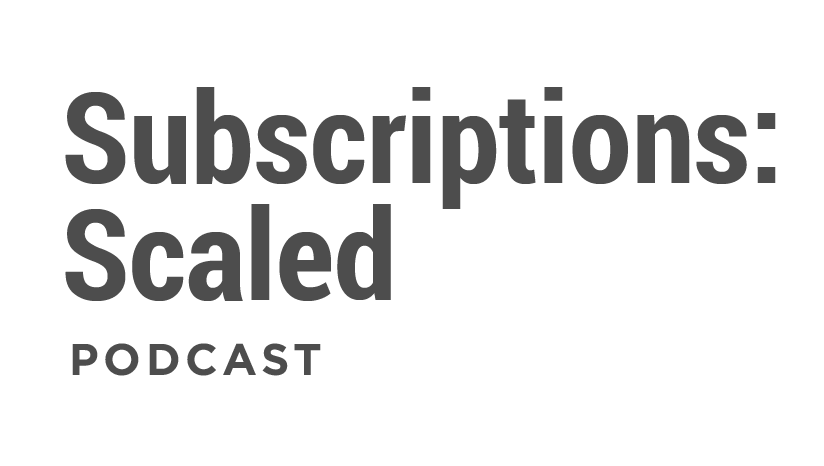Episode 148: Payment Processing Fundamentals with Melanie Stout of Optimized Payments and Brian Kehn of HomeServe USA
In the subscription business sector, mastering payment processing is a crucial component for success. Recently, Brian Kehn, Vice President of Operations at HomeServe USA, and Melanie Stout, Head of Recurring Services of Optimized Payments, joined Nick Fredrick on his podcast, “Subscriptions: Scaled,” to discuss this critical aspect.
Understanding Payment Processing Terminology
Brian starts by underscoring the importance of familiarizing oneself with the diverse terminology used in payment processing. “If you talk to three different vendors, they call it three different things,” he says, highlighting the necessity for a clear understanding of these terms to effectively manage the payment processing landscape.
Melanie continues by providing a comprehensive breakdown of the payment ecosystem, where she goes into detail about the roles of commerce platforms, billing systems, processors, acquirers, gateways, and other entities like orchestration layers and fraud screening. The interview is packed with insights especially relevant for tech CEOs contemplating their payment infrastructure.
Decision Making: Build Versus Buy
One of the hot topics discussed by Brian and Melanie is the 'build versus buy' decision faced by many subscription businesses. Brian recommends that startups initially outsource payment processing and consider in-housing these processes as they expand. Melanie echoes this sentiment, noting that control over payment processing is ideal for larger businesses, assuming they possess the required resources.
An integral part of their conversation focuses on decline recovery strategies. Brian notes that subscription businesses should anticipate high initial success rates with a 4-7% return from recovery efforts, with Melanie adding that promotional strategies and billing frequencies also significantly impact success rates.
The Impact of Different Payment Methods
When discussing different payment methods, Brian highlights the importance of selecting the most effective methods, emphasizing their varying 'stickiness.' He remarks, “ACH recurring has much more stickiness compared to a prepaid card.” It’s important to understand that different payment methods offer diverse levels of customer retention. Melanie expands by addressing the strategy of testing various payment methods to boost conversion rates, cautioning that an abundance of options might overwhelm customers.
Compliance and Costs in Payment Processing
Discussing the impact of compliance requirements on the acceptance of payment methods, Brian and Melanie reveal that these considerations play a significant role in decision-making. They explore the costs associated with payment processing, particularly in the U.S., and the factors affecting these costs, including card type and transaction data.
Melanie elaborates on the complexities of payment processing fees, explaining the nuances of bundled rates and Interchange Plus pricing. She emphasizes the importance of understanding fee structures, stating, “All of that is definitely negotiable.” Therefore, underlining the necessity of negotiations in managing processing costs effectively.
The High Cost of Payment Processing in the U.S.
When reflecting on the high cost of payment processing in the U.S., Brian attributes this to the large number of banks and the high levels of fraud. He indicates that negotiating lower fees often depends on the volume of transactions. Melanie remarks that a portion of these fees goes towards funding customer rewards programs, emphasizing that it's the merchants who bear these costs.
Security Measures and Risk Justification
The conversation then addresses the justification of high-risk costs in payment processing. Despite advanced security measures like EMV codes and 3D Secure, Brian and Melanie acknowledge the ongoing challenge of balancing fraud risk mitigation with cost management.
Tokenization: Enhancing Payment Security
Brian explains tokenization as “converting credit card information into an unreadable code,” crucial for preventing fraud. “It's basically when you take the credit card information and through a system code, come up with a generic code that makes it unreadable.” Melanie adds that most merchants outsource tokenization, either through a billing system or an acquirer. The goal is to avoid being tied down to one merchant processor, enabling flexibility and disaster recovery options.
She discusses network tokenization, which shows promising results in lifting approval rates. This advanced form of tokenization involves issuers creating a token, thereby recognizing the relationship between the merchant and the cardholder and reducing declines.
When asked about consumer awareness of tokenization, Melanie believes most are unaware of it. The focus remains on seamless transactions rather than the underlying security measures. Brian concurs, emphasizing that the primary concern for merchants is the security and efficiency of the transaction process rather than consumer perception.
Reporting: Vital for Payment Monitoring
The importance of reporting in payment processing is highlighted, particularly focusing on first-time collection rates and rebill success. Melanie stressed the value of rich payment data in informing various aspects of business, from marketing strategies to overall success rates.
Addressing Fraud and Security
Fraud remains a significant concern and Melanie has observed an increase in fraudulent activities, especially during COVID-19. She suggests that evolving security measures should be matched with evolving tactics by fraudsters.
She also stresses the importance of monitoring both transaction counts and dollar amounts, highlighting the benefits of alert systems that can notify changes and underscoring the importance of transactional data in identifying significant shifts.
Data Warehousing and Reporting
Brian explores the use of third-party vendors for consolidating payment processing data for monitoring and alerts. He also emphasizes the use of internal data warehouses for a deeper dive into transaction details, essential for effective data management.
Advice for Beginners in Payment Processing
The podcast concludes with advice for newcomers to immerse themselves in online resources to understand key payment processing terms and to recognize the importance of understanding the interconnectivity between processors and vendors.
Nick emphasizes the power of networking and utilizing educational resources for comprehensive learning in the payments field.
In conclusion, Melanie Stout and Brian Kehn present an insightful guide on comprehending and enhancing payment systems within subscription models. Their proficiency spans essential elements, including security protocols, data analysis and the significance of ongoing education in the realm of payment processing.
---
Ready to get started with Rebar?
Head to rebartechnology.com or email info@rebartechnology.com to schedule a call today.
#SaaS #Subscriptions #SubscriptionBusiness #SubscriptionService
